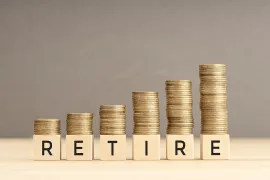A Divorce Behind Him and No Company Pension, 50-Something Father has to Finance Own Retirement
Frank will have to make his $100,000 a year goal from investments, CPP and OAS — and the clock is ticking
Andrew Allentuck
Situation: Businessman in his early 50s has to add to kids’ education savings, then build retirement funds
Solution: Strong investment returns in dividend stocks should work if loan costs can be contained
A businessman in the home building industry — we’ll call him Frank — makes his home in Ontario. At the age of 52, he brings home $7,000 a month to support two teenage kids. He has had financial strains including a divorce, but his net worth, $2.3 million after deduction of loans of $835,909, is robust — courtesy of the strong real estate market that has pushed the estimated value of his house to $1.7 million. His investments — a $372,000 taxable portfolio, RRSPs of $831,500, a $82,000 TFSA and $90,000 in RESPs for his children are well managed.
In spite of Frank’s solid assets and strong net worth, there are problems. His job is no more secure than his company in a very competitive market. He would like to increase his investments for when he retires in perhaps 13 years. There will be no company pension. The businessman will be on his own with just his investment income from RRSPs, TFSAs and other accounts, CPP and OAS.
That’s the dilemma, for in spite of his success in business and investments, he figures he will need more cash flow at 65. He’d like $20,000 a year for travel and is willing to downsize his house, but he still sees a gap between present investments, their income, CPP and OAS and his goal of $100,000 before tax. And the clock is ticking.
“In four years, when I am 56, both my children will have left home,†he explains. That is the timetable for shifting from looking after the kids half time, as he does now with shared responsibilities, to looking after himself full time and focusing on the tidy fortune he has skillfully built through wise investments.
The odds are good that Frank’s plans will work out as hoped, explains Derek Moran. Head of Smarter Financial Planning Ltd. in Kelowna, B.C., he figures that Frank, as a skilled investor, can achieve the capital required to generate his six figure pre-tax retirement income goal. It is just a question of getting from here to there. For now, Frank brings home $7,000 a month after tax. He spends only his take-home salary and allows interest and dividends to compound in his accounts.
Asset Management
“His return on invested assets is mid-single digits — about 5 per cent to 8 per cent. His picks are chartered banks and their payouts and market performance support his returns,†Moran says. But there are problems. He has $498,909 of mortgages with interest rates of 2.96 per cent and 2.88 per cent. Even after tax, the mortgages cost less than his after-tax return on his investments. There is also a $337,000 secured line of credit which he uses for investments, so the interest cost is just the interest he pays, $1,000 per month, which is tax-deductible.
The problem of asset management is really risk control. Frank could sell $27,900 of investments from his $372,000 taxable portfolio and use it to pay off one of his residential mortgages. That mortgage’s pure interest cost apart from principal repayment is $130 per month. That’s peanuts, but given that the stocks purchased with the loan have a gain of $35,000, after-tax profits would cover the loan completely, Moran says. The alternative is to ride the market and keep growing the gains while paying interest. We’ll assume he continues to carry the loan and accepts the risk of rising interest rates eroding his net gains.
Education Savings
Frank has $90,000 in his family RESP, which is a good base for the kids ages 13 and 16. He adds $310 per month, which is less than the $208 per child or $2,500 per year maximum to qualify for the full Canada Education Savings Grant of the lesser of $500 or 20 per cent of contributions. Frank can afford and indeed should boost contributions to $516 per month. Assuming that he does that, the older child with two more years of contributions and bonuses would have about $50,000 for university or other post-secondary education expenses while the younger, who remains eligible through age 17, would have $66,000 with five more years of contributions. In each case, the calculation assumes a 4 per cent annual return — consistent with Frank’s demonstrated management skills. Frank should even out the funds available to give each child $58,000 — more than enough for four years tuition and books at any university or college in Ontario, Moran notes.
Retirement Planning
Frank has $831,500 in his Registered Retirement Savings Plan and contributes $1,400 per month or $16,800 per year. Assuming that continues to obtain a 4 per cent return after inflation, the RRSP would have $1,663,840 in total assets when he is 65. That sum would support payouts of $106,500 per year for 25 years when all income and capital would be expended.
Frank’s Tax-Free Savings Account, with $82,000 in total assets — that’s 44 per cent investment gains over $57,500 allowable contributions to date, if supported with $5,500 contributions for another 13 years to his age 65, will become $228,000 with 4 per cent growth after inflation. That sum would support payouts of $14,600 in 2018 dollars for 25 years.
Frank’s $372,000 taxable investment portfolio with assumed 4 per cent growth after inflation and with the assumption of no further contributions held for 13 years to his age 65 would have a value of $619,400 and support payouts of $39,650 for the 25 years to his age 90.
At 65, Frank can have full Canada Pension Plan benefits, currently $13,610 per year and full Old Age Security benefits of $7,075 at 2018 rates, though we’ll assume that it will all be clawed back.
Adding up the sources of post-65 income, Frank would have taxable annual cash flows of $106,500 from his RRSP, $39,650 from taxable investments, and $13,610 from the Canada Pension Plan. The total, $159,760 taxed at 30 per cent after pension income and personal credits plus $14,600 from his TFSA would leave him with $10,536 monthly disposable income.
“The $100,000 pre-tax retirement income target is entirely achievable,†Moran concludes. “This case shows what diligent investing can generate. He did it in spite of divorce and absence of any company pension while supporting two kids. It’s an example of what diligent saving and focused investment can achieve.â€
(C) 2019 the Financial Post, Used by Permission

































